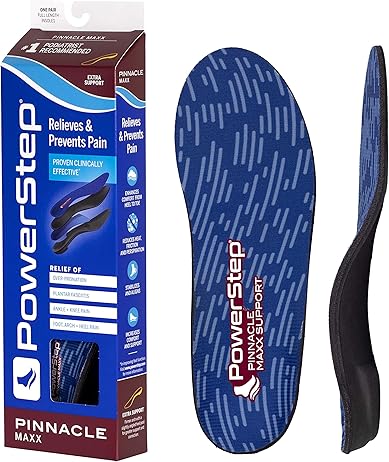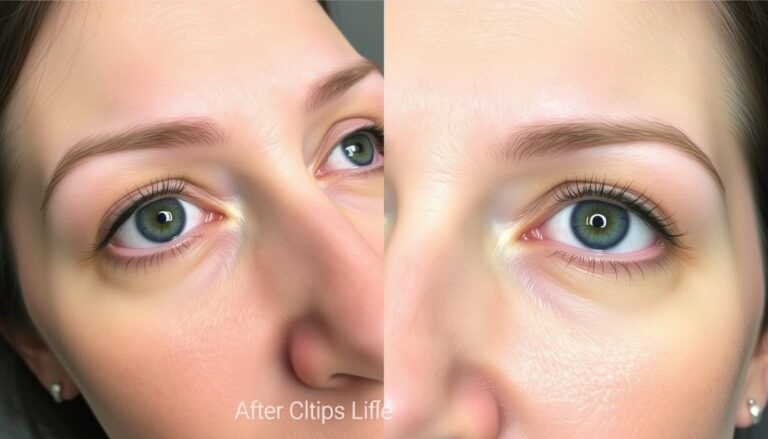Best Orthotic Devices for Plantar Fasciitis Relief
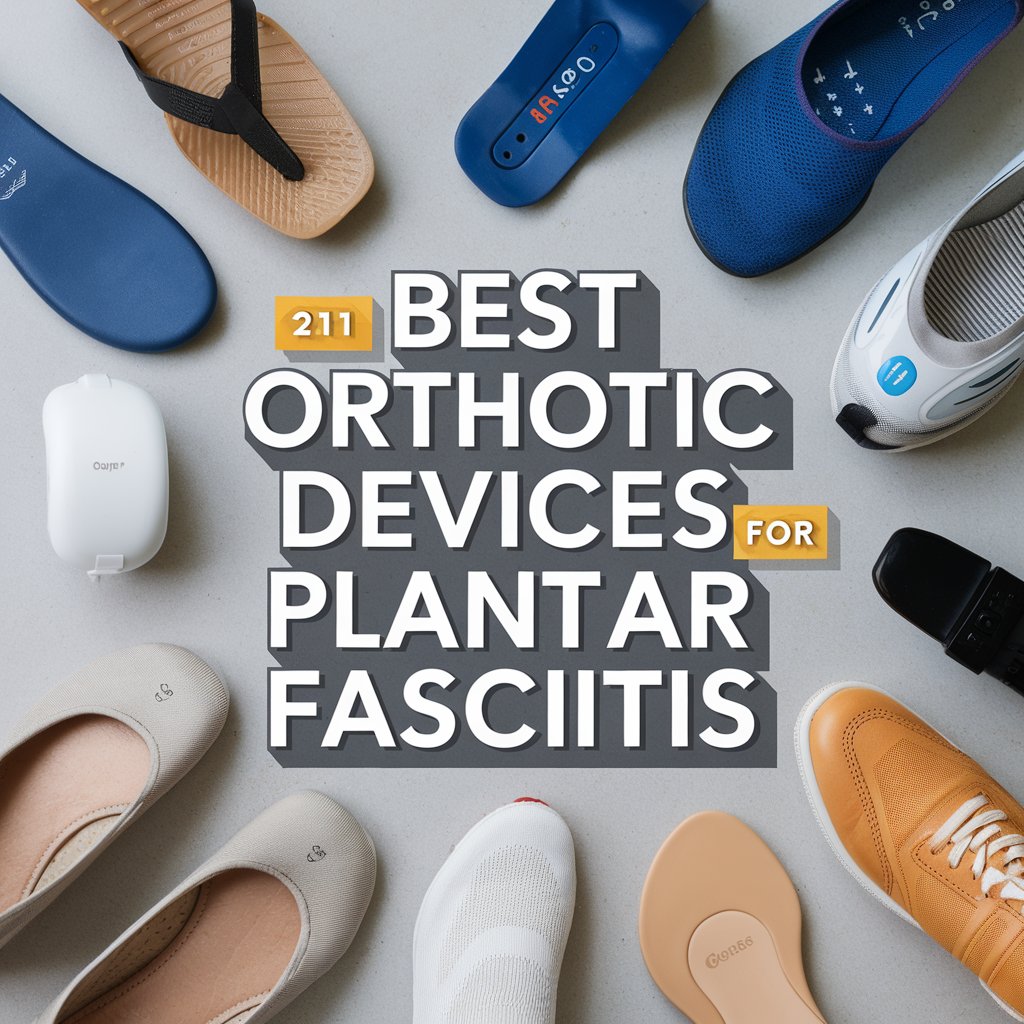
Imagine waking up to sharp pain in your heel every morning. This is a common issue for those with plantar fasciitis. It’s a condition that affects many, especially those in their middle years. Factors like bad shoes and being overweight can make it worse. That’s why orthotic devices for plantar fasciitis are so important.
Trying over-the-counter remedies or seeing a doctor can be tough. But, the right orthotics can change your life. Brands like Vasyli+McPoil and PowerStep offer top-notch solutions. They help ease plantar fasciitis pain and improve foot health. This article will show you how these shoe inserts can help you feel better.
If your pain doesn’t go away or interferes with your daily life, there are more options. Chiropractic care might help. You can read more about it here. We’ll share insights on the best orthotic inserts that can really help.
What is Plantar Fasciitis?
Plantar fasciitis is a common issue that causes heel pain. It happens when the plantar fascia, a tissue at the foot’s bottom, gets inflamed. This tissue connects the heel bone to the toes. The inflammation comes from overusing, stretching, or straining the plantar fascia.
Those with this condition often feel pain that feels like a stabbing. This pain is usually worse when you first get up in the morning. It can also get worse after standing or sitting for a long time, making everyday tasks harder.
Knowing about plantar fasciitis is key for finding the right treatment. Using orthotic devices can help ease the pain. There are also exercises and supportive products to help with symptoms and aid in recovery.
Causes of Plantar Fasciitis
Plantar fasciitis is a common cause of heel pain, making daily activities uncomfortable. It’s caused by many factors, including lifestyle, body structure, and how much you move. Carrying extra weight puts stress on the plantar fascia, leading to inflammation.
Wearing the wrong shoes can also lead to plantar fasciitis. Shoes without enough support or cushioning increase the risk of getting hurt. Standing for a long time, especially if your job requires it, can make this condition worse. People with flat feet or high arches are more likely to get it because their feet put different stress on the plantar fascia.
Activities like running or dancing can stress the heel and nearby tissues. These activities involve a lot of repetitive impact. This can cause symptoms in people who are more likely to get it. In fact, plantar fasciitis is a common injury among runners, affecting about 10% of them.
“Plantar fasciitis occurs in about 10% of the general population, with an increased incidence observed among those aged 40 to 60.”
For some people, plantar fasciitis affects both heels at the same time. It’s more common in women and people who are overweight. Knowing what causes plantar fasciitis helps people take steps to prevent it and treat it.
| Factor | Impact |
|---|---|
| Excessive Weight | Increases stress on the plantar fascia, leading to inflammation. |
| Improper Footwear | Lacks support; may contribute to development of symptoms. |
| Prolonged Standing | Increases load on the heel, resulting in stress and pain. |
| Anatomical Structure | Flat feet or high arches influence mechanics and stress levels. |
| Physical Activity | Repetitive impact from activities like running exacerbates the condition. |
Symptoms of Plantar Fasciitis
Plantar fasciitis is a common issue that causes sharp, stabbing heel pain. This pain is usually worse when you first get up in the morning or after sitting for a while. It also gets worse with activities like walking or running.
This pain can really disrupt your daily life. It’s important to know the signs to watch for:
- Intense pain in the heel, especially during initial movements.
- Increased foot pain after exercise or at the end of the day.
- Discomfort that lessens with activity but returns after being stationary.
- Stiffness in the foot, particularly in the morning.
People who are active, especially those between 40 and 70, are more likely to get these symptoms. Women are a bit more at risk, and pregnant women often feel heel pain in the later stages of pregnancy. Foot issues like high arches or flat feet can also make you more prone to plantar fasciitis. Knowing these risk factors can help you manage and reduce the pain.
| Age Group | Risk Level |
|---|---|
| Under 40 | Low Risk |
| 40-70 | High Risk |
| Pregnant Women | Increased Risk |
| Overweight Individuals | Increased Risk |
| Active Workers (e.g., Factory Workers) | High Risk |
| Long-Distance Runners | Higher Risk |
Importance of Orthotic Support

Orthotic support is key in helping with plantar fasciitis by easing pressure on the plantar fascia. It spreads the weight of the foot evenly, which helps avoid more swelling and cuts down on pain. Now, with both custom and ready-made options, orthotics are a must-have for many looking for relief.
For over 150 years, foot orthoses have been trusted to treat many musculoskeletal issues and prevent injuries. The World Health Organisation (WHO) listed them as one of 50 key assistive products in 2016. This shows how vital orthotic support is for those with foot pain.
Research shows that orthotics, like prefabricated heel pads and multi-layered insoles, bring a lot of relief. In fact, studies found an 89% success rate in easing pain from plantar fasciitis. This is because orthotics fix biomechanical problems during everyday activities, making moving around better and improving life quality.
Orthotics have different types, including over-the-counter and custom foot orthoses (CFOs). While store-bought inserts give some cushioning, they might not fit as well as needed for best results. On the other hand, custom orthotics are made just for you, fixing structural problems and helping those with plantar fasciitis.
In short, the right orthotic support is crucial for managing foot problems and enhancing daily life. With the latest shoe insert technology and custom options, tackling foot pain has never been easier.
Orthotic Devices for Plantar Fasciitis
Orthotic devices help ease the pain of plantar fasciitis. They come in forms like insoles, arch supports, and custom orthotics. Each type aims to improve foot alignment and support during daily activities.
Types of Orthotic Devices Available
There are many plantar fasciitis orthotic inserts to choose from:
- Insoles: These fit inside shoes and offer cushioning and support under the foot.
- Arch Supports: They help stabilize the foot and lift the arch, easing strain on the plantar fascia.
- Custom Orthotics: Made from a mold of your foot, these provide the best support and comfort.
How Orthotics Relieve Pressure on the Plantar Fascia
Orthotics for plantar fasciitis keep the foot in the right position and spread out forces evenly. This reduces pressure on the plantar fascia, which helps lessen pain. For example, the foot has about 200,000 proprioceptors that feel these changes, improving foot function.
Using orthotics regularly can cut symptoms by 50% in two weeks. This could lead to full recovery.
| Type of Device | Benefits | Success Rate |
|---|---|---|
| Insoles | Cushioning and comfort | 97.6% (Barefoot Science) |
| Arch Supports | Stability and elevation | High user satisfaction |
| Custom Orthotics | Personalized support | Varies by individual |
Choosing the Right Orthotics for Your Needs
Finding the best orthotics for plantar fasciitis can make a big difference in comfort and foot alignment. It’s important to know what you need based on your foot type and pain level. These factors help you pick the right support for your feet.
Understanding Your Foot Type
Knowing if you have flat, high arch, or neutral feet is key when picking orthotics. Each type of foot needs different support to stay aligned and comfortable, especially with plantar fasciitis.
- Flat Feet: Usually need more arch support and cushioning to ease pain.
- High Arches: Do well with extra cushioning and flexibility to soak up shock and offer comfort.
- Neutral Feet: Typically need moderate support, which helps balance and spreads out weight evenly.
Assessing the Level of Pain and Support Required
It’s important to know how much pain you have when choosing orthotics. If you have mild pain, over-the-counter options might help. But if the pain is severe, custom-made orthotics could be a better choice. The firmness and cushioning level also play a big part in easing pain.
| Orthotic Type | Price Range | Pain Relief Level | Best For |
|---|---|---|---|
| Over-the-Counter Inserts | $20 – $80 | Moderate | Common foot issues like plantar fasciitis |
| Prescription Orthotics | $200 – $800 | Severe | Custom needs for specific foot conditions |
| Kiosk-Generated Orthotics | $100 – $200 | Moderate to High | General support with a custom-like fit |
Take your time to figure out your foot type and support needs. This will help you find better comfort and more effective treatment for plantar fasciitis. Knowing how to choose orthotics can improve your life a lot.
Best Orthotic Shoe Inserts for Plantar Fasciitis
Finding the right shoe inserts can make a big difference for those with plantar fasciitis. The best inserts have features that support your foot’s alignment and ease the pain. Knowing what to look for ensures you get the best results.
Features to Look For in Shoe Inserts
Key features to look for include:
- Deep heel cups for stability and proper alignment.
- Medium cushioning for shock absorption during activities.
- Firm arch support that fits your foot type, easing pressure.
Top Recommended Brands for Shoe Inserts
Some brands are known for their effective plantar fasciitis shoe inserts. They are praised for their design and how well they work:
| Brand | Product | Features | User Ratings | Visit Store |
|---|---|---|---|---|
| Heel That Pain | Heel Seats | HTP-Science™ Rubber, Fascia-Bar technology | 90% satisfaction rate | Check price |
| Dr. Scholl’s | Plantar Fasciitis Pain Relief Insoles | Proven pain relief | 26,000 ratings on Amazon | Check price |
| Powerstep | Pinnacle Breeze Insole | Supportive & cushioned | High customer recommendations | Check price |
| WalkHero | Plantar Fasciitis Insoles | High arch support | 39,000 five-star ratings | Check price |
| Spenco | Total Support Max | Comprehensive support | 7,000 ratings, nearly five stars | Check price |
Choosing the best orthotic shoe inserts can quickly reduce pain and improve daily life. Products like Heel Seats show results in a month with regular use. For more info on prostate cancer and its symptoms, visit this resource.
Custom Orthotics for Plantar Fasciitis
Custom orthotics for plantar fasciitis offer a personalized way to ease foot pain. They are made to fit your foot perfectly, giving tailored foot support that can lessen pain. Unlike standard insoles, custom orthotics spread pressure out evenly across the foot.
People who are active often get plantar fasciitis, which makes the bottom of the foot sore. Many start with store-bought insoles, but they might not fix the issue. Studies show that cheap inserts can work just as well as custom ones in easing pain and making daily activities easier.
Yet, some doctors suggest custom orthotics if other treatments don’t work. Places like Healthy Feet Podiatry in Downtown Manhattan offer these to help with similar problems. They’re especially good for people with flat feet, as they give the arch support it needs and help with shock and balance.
Insurance usually doesn’t pay for custom orthotics for plantar fasciitis, but they can be worth it in some cases. For lasting relief, you need custom orthotics that fit tightly, like total contact orthotics. Making them takes about 3 to 4 weeks, and getting them to fit right is key for them to work well. If they don’t fit well, they won’t help much and could make things worse.
In the end, custom orthotics can be a big help for plantar fasciitis. They support and stretch the arch, absorb pressure, and help with recovery and foot function.
Plantar Fasciitis Arch Supports
Many people suffer from plantar fasciitis, making finding the right treatment crucial. Using plantar fasciitis arch supports is a key part of this. These supports help lift and stabilize the foot arches. This can lessen the strain on the plantar fascia, improve foot mechanics, and help with posture. They are a big help in easing the symptoms of this condition.
Functionality of Arch Supports
Arch supports give the foot the stability it needs. They spread the weight evenly, which reduces stress on the plantar fascia. This can make a big difference for people aged 45-64 who are active and often have foot pain. They also help with better walking, which is great for runners of all levels.
Benefits of Combining Arch Supports with Other Treatments
Using arch supports with other treatments can make a big difference. Patients often see better results when they use these supports with physical therapy or special exercises. For instance, combining them with Genext Active Orthotics can help with issues like bunion pain and heel spurs. This approach aims for long-term relief and a better quality of life.
| Type of Support | Function | Benefits |
|---|---|---|
| Genext Active Orthotics | Stability and Alignment | Reduces pain, fits most casual shoes, and can be trimmed for custom fit |
| Arch Supports | Elevates Foot Arches | Decreases strain on plantar fascia, promotes better posture |
| Functional Orthotics | Controls Joint Movement | Addresses biomechanical problems, enhances stability |
Popular Plantar Fasciitis Insoles
Finding the right insoles for plantar fasciitis can make a big difference in comfort and support. Many brands have special features to help ease pain and boost foot health. This section looks at some top insoles for plantar fasciitis, along with what users say about them.
Comparison of Different Brands
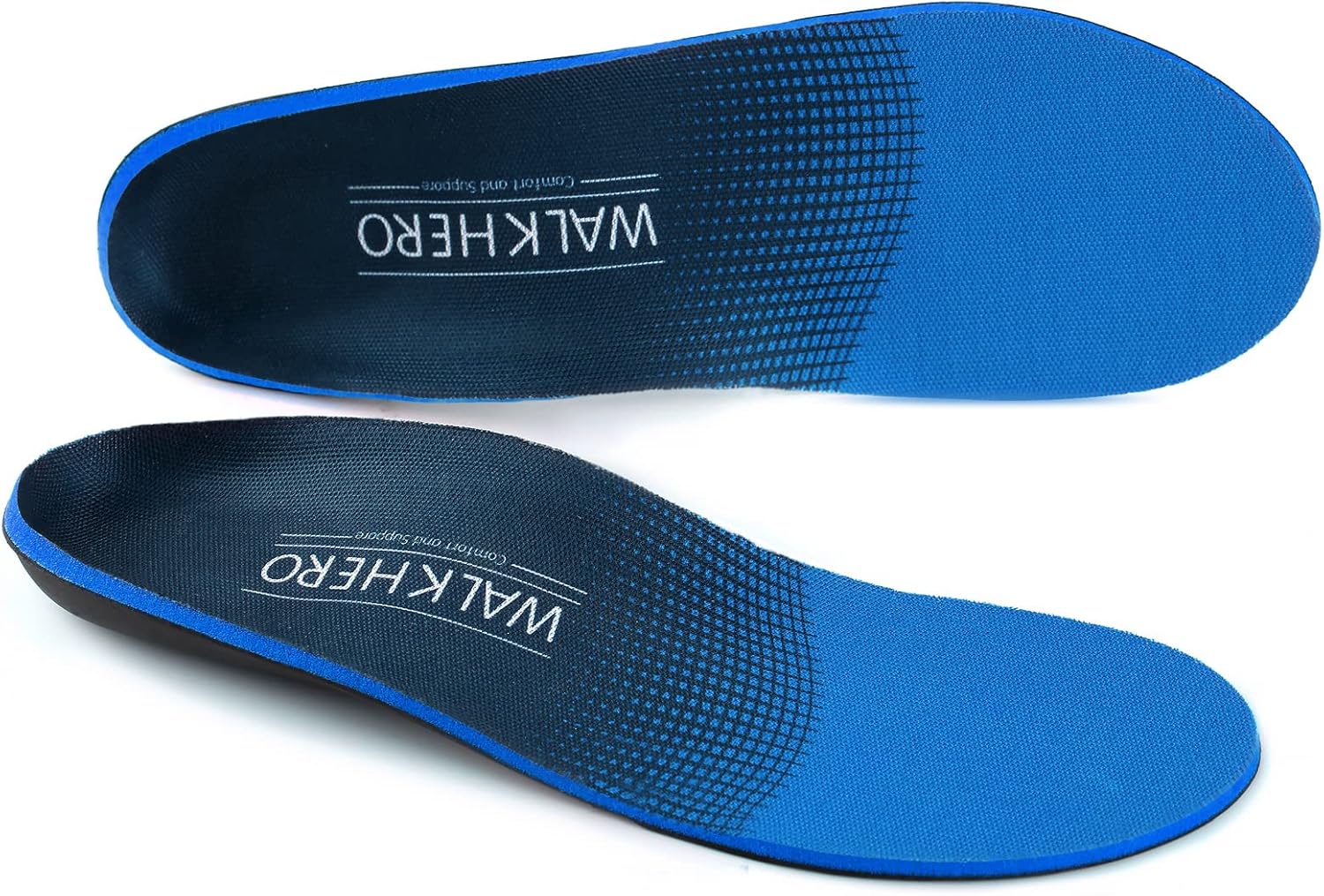
WALK·HERO Amazon's Choice

Dr. Scholl's Amazon's Pick

Superfeet Most sold
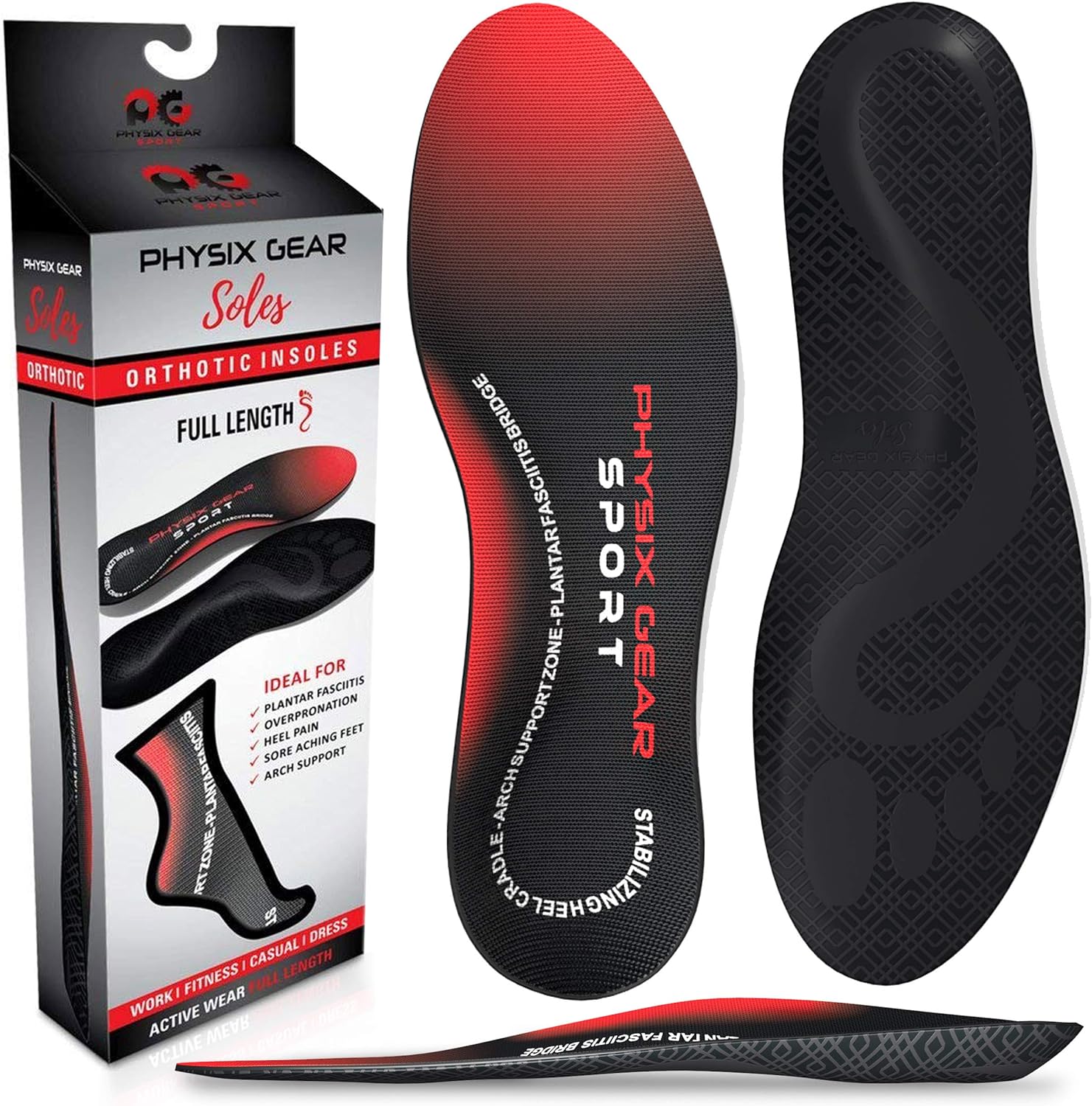
Physix Gear Best Values
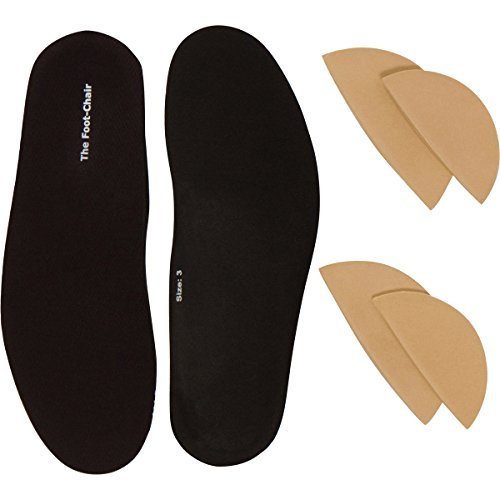
FootChair Best Values
Review of User Experiences
User experiences are key in judging these popular plantar fasciitis insoles. Many reviews talk about how comfortable and pain-relieving these products are. For example, WALK·HERO insoles have helped many reduce foot pain during everyday tasks. Dr. Scholl’s insoles are also often praised for quickly easing pain after a few uses.
Durability is also important. Superfeet’s insoles are known for lasting a long time, even with regular use. Physix Gear inserts are great for athletes recovering from foot injuries because of their strong support.
Looking into these insoles through user reviews can really help when choosing the right one. Each brand offers different levels of support for various needs and lifestyles.
How to Properly Fit Orthotics in Your Shoes
Putting on orthotics the right way is key to getting the most out of them. It’s a simple process that ensures you feel good and they work well.
- First, take out the insoles from your shoes. This makes room for the orthotics.
- Then, put the orthotics into your shoes. Make sure they fit snugly but don’t squish your foot.
- Make sure there’s enough space in the shoe. Your toes should move freely without feeling trapped.
- Stand up and walk around. Check if you feel any discomfort or pressure. Make changes if needed.
Some people feel better right away with new orthotics. Others might need up to a month to get used to them. To avoid discomfort, start wearing them for 1-2 hours more each day in the first week. If you notice red spots or any signs of friction, watch out for blisters.
Your shoes should be the right fit, with removable insoles and enough space for the orthotics. They should also have a wide toe box for a good fit. If you’re still feeling pain after 3-4 weeks, see a Pedorthist for help to get your orthotics fitted better.
| Consideration | Details |
|---|---|
| Break-in Period | 2-3 weeks recommended for new orthopedic foot inserts. |
| Wearing Time | Gradually increase by 1-2 hours daily. |
| Maximum Usability | 1-4 years, may vary with body weight and activity level. |
| Cost Effectiveness | Custom orthotics often cost less than half of most prescription orthotics. |
By following these steps, you can make sure your orthotics fit well. This will help with comfort and support, especially for issues like plantar fasciitis.
Orthotic Treatment for Plantar Fasciitis Recovery
Orthotic treatment can greatly help with plantar fasciitis recovery. This condition affects over 2 million Americans every year. It causes pain on the foot’s sole, especially near the heel. Using orthotics, physical therapy, and stretching can help recover fully.
Barefoot Science insoles have a 97.6% success rate for plantar fasciitis. The British Chiropractic Association and many professionals recommend them. These insoles aim at the pain’s root, giving lasting relief and improving foot function.
Traditional orthotics may help at first but aren’t good for long-term use. Regular check-ins with doctors make orthotic treatment more effective. This ensures you get care that fits your recovery needs.
Using the right shoes, like the HOKA Bondi 7 or Oofos Oolala Sandal, helps too. Online groups, such as the Plantar Fasciitis Talk and Tips Support Group on Facebook, offer great advice and stories from others. For mental health support and learning, check out the National Institute of Mental Health.
Maintaining Your Orthotic Devices
Looking after your orthotic devices is key to making them last longer and work better. It’s important to handle them right and clean them regularly. Following some easy tips can make these important tools last longer.
Cleaning and Care Tips
Cleaning your orthotics is a must. Here are some ways to keep them clean and working well:
- Gentle Cleaning: Use a damp cloth to wipe them down after each use to remove dirt and sweat.
- Use Mild Detergent: For a deeper clean, use mild soap and water. Stay away from harsh chemicals that could harm the materials.
- Allow to Dry: Make sure they dry completely in the air before putting them back in your shoes. This prevents bad smells and damage.
- Storage: Keep them in a cool, dry spot out of direct sunlight. Don’t bend or fold them.
When to Replace Orthotics
Knowing when to get new orthotics is crucial. Look out for these signs:
- Visible Wear: Check for cracks, splits, or worn-out cushioning.
- Loss of Support: If they don’t support you like they used to, it’s time for new ones.
- Change in Comfort: If you feel more discomfort, even with your orthotics, it’s time to consider getting new ones.
- Duration of Use: Check them every 6 to 12 months, especially if you use them every day.
By following these care tips, you can keep your orthotics in good shape. This means they’ll stay effective and clean, making daily activities more comfortable.
Exercises and Stretches to Complement Orthotic Use
Using exercises and stretches can boost the effects of orthotics for plantar fasciitis. It’s important to strengthen the foot muscles and improve flexibility. Here are some techniques to try.
Recommended Stretches for Foot and Calf Muscles
Start your day with stretching to ease calf and plantar fascia stiffness. Here are some effective stretches:
- Calf Stretch: Stand with your feet hip-width apart, one foot in front of the other against a wall. Bend the front knee and keep the back leg straight. Hold for 30 seconds, then switch sides.
- Plantar Fascia Stretch: Sit and cross one foot over the other. Use your hand to pull your toes back, stretching the fascia. Hold for 30 seconds.
- Towel Scrunches: Sit in a chair and put a towel on the floor. Use your toes to pull the towel towards you. Do this 10-15 times to strengthen your foot muscles.
- Tennis Ball Massage: Roll your foot over a tennis ball to massage the arch. This helps relieve tension after being active.
- Ice Foot Roll: Roll a frozen water bottle under your foot for 10 minutes at the end of your day. This helps reduce inflammation.
Doing these exercises regularly can help improve things slowly. Make sure to hold stretches for 20-30 seconds and do them throughout the day. This keeps your feet flexible and strengthens the muscles that support them.
Working on these tight muscles helps with pain and makes your foot more stable. This approach can make orthotics work better and ease your symptoms.
Seek Professional Guidance for Persistent Pain
Plantar fasciitis can be tough, and many people find relief with orthotics. But, if pain doesn’t go away after a week, you should get help. A doctor can check what’s best for you.
Doctors might suggest physical therapy to strengthen your foot and ankle muscles. They might also talk about shockwave therapy if other treatments don’t work. Studies show these methods can help a lot and are backed by science.
If your pain stops you from doing daily tasks or walking right, see a specialist. You might need custom orthotics that fit your foot perfectly. Getting help early can make recovery faster and help you move better.
FAQ
What are the best orthotics for plantar fasciitis?
How do plantar fasciitis shoe inserts work?
Are custom orthotics for plantar fasciitis worth it?
What are the symptoms of plantar fasciitis?
How do I choose the right orthotics for my foot type?
What features should I look for in plantar fasciitis arch supports?
Can I use over-the-counter plantar fasciitis insoles?
How often should I replace my orthotic devices?
What types of exercises can help with plantar fasciitis?
When should I seek professional help for persistent plantar fasciitis pain?


